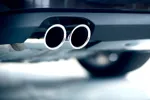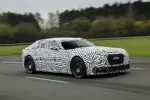By Linden Holliday, CEO, MyDrive Solutions
If telematics is to deliver real value to the industry in the long term, it is essential to gain real insight into what determines safe driver behaviour; to build a proven model of safe driving and match that model with individual driver performance.
According to RoSPA, the safest drivers have a number of clearly defined characteristics – and the organisation is currently embarking upon a telematics project to capture the driving behaviour of its own advanced drivers.
The second-by-second driver analysis information is being used to create a credible and objective benchmark against which other drivers can be measured.
RoSPA describes the safest drivers as being able to demonstrate an ability to make decisions that encourage co-operation with others in traffic, rather than conflict.
RoSPA also believes that making good decisions requires an ability to focus on relevant information and use it to make good decisions as well as to communicate intentions effectively to other road users.
Selection of speed and driving style are critical but also context sensitive.
The speeds chosen by safe drivers will be linked to the immediate conditions and the space available, giving time to plan and anticipate rather than always react to the dynamic environment of the road.
All this will manifest itself in driving that is smooth, systematic, consistent, unhurried and co-operative.
If the industry is to really develop premiums that reflect a driver’s behaviour, it is imperative to move beyond the tools currently being used and opt for detailed monitoring of driver behaviour.
Companies need to record a raft of information that includes driver consistency, patterns of conduct and the timing of trips.
By adding in GPS location data, congestion data and road familiarity to provide context to each driving manoeuvre, the insurer can truly understand driver behaviour and hence attribute appropriate premiums.
However, if the industry persists in its current approach, collecting limited, less relevant data, and failing to analyse it correctly, telematics will fail to fulfil its potential.
It’s an example of a little bit of knowledge being a dangerous thing.














Login to comment
Comments
No comments have been made yet.